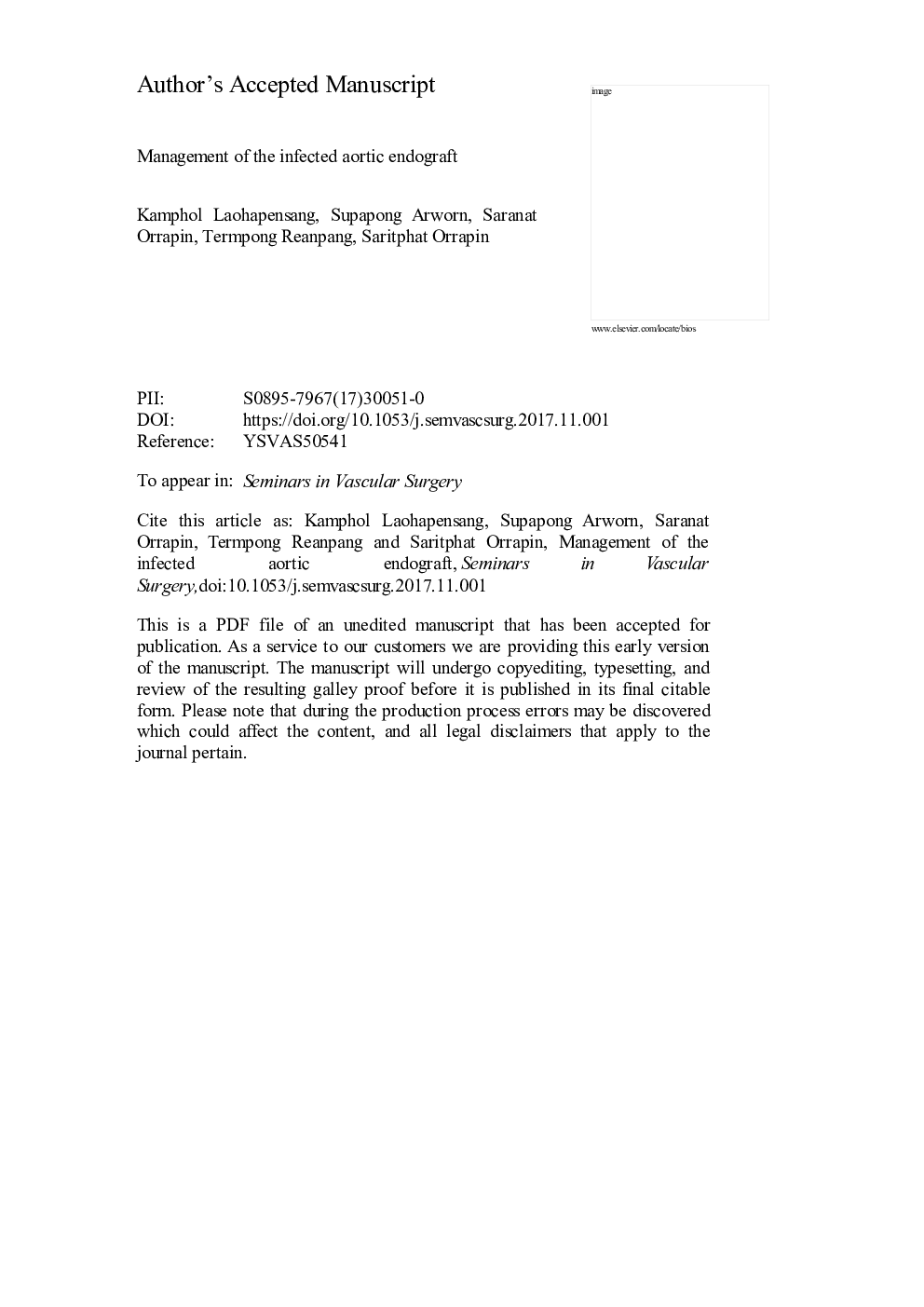| Article ID | Journal | Published Year | Pages | File Type |
|---|---|---|---|---|
| 8679236 | Seminars in Vascular Surgery | 2017 | 12 Pages |
Abstract
Although the incidence of abdominal and thoracic aortic endograft infection is infrequent, ranging between 0.2% and 5%, stent-graft infection carries significant morbidity and mortality and exemplifies a formidable therapeutic challenge. The treatment goal is to eradicate the infectious process by endograft explantation, regional tissue debridement, and arterial reconstruction by either an extra-anatomic or in situ grafting procedure using autologous vein, cryopreserved allograft, or antibiotic-soaked prosthetic grafts. Successful treatment should maintain normal arterial perfusion to the visceral arteries and lower extremities. Important treatment adjuncts included antibiotic therapy based on cultures, specific bacterial isolates, and coverage of the repair or aortic stump using an omental wrap. Nonoperative treatment in patients with severe comorbidities that preclude endograft explantation may be appropriate in the setting of low-grade biofilm infection. Percutaneous drainage of the perigraft abscess followed by continuous antibacterial irrigation of the cavity can be utilized, but is associated with a high clinical failure rate.
Related Topics
Health Sciences
Medicine and Dentistry
Cardiology and Cardiovascular Medicine
Authors
Kamphol MD, FACS, Supapong MD, Saranat MD, Termpong MD, Saritphat MD,
